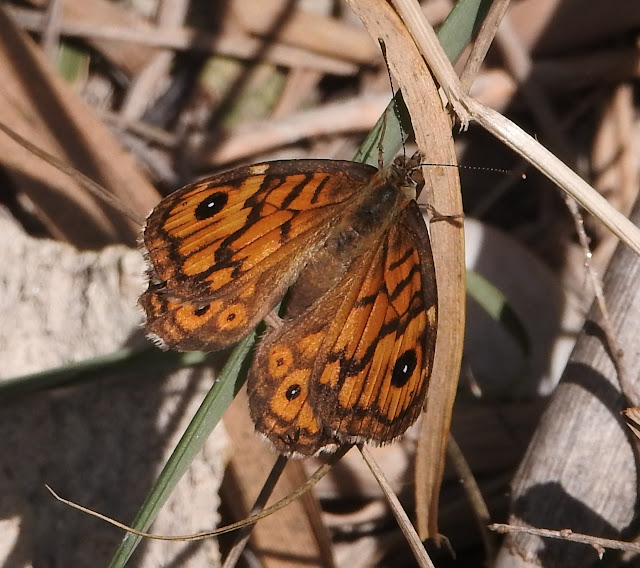This Blog contains Wildlife and Bird Photos from Walks, Safaris, Birding Trips and Vacations. Most of the pictures have been taken with my Nikon P900 and P950X cameras. On the right of the page are labels for each species of Bird/Animal etc. Click on a label and it will show all of the photos taken for that species. I am adding as much information for each species as I can from sources Wikipedia. To see any pictures at full size just click on the picture.
TOTAL PAGEVIEWS
TRANSLATE
Thursday 4 November 2021
Wednesday 3 November 2021
Tuesday 2 November 2021
24-10-2021 ATTICA ZOO ATHENS, GREECE - YELLOW BIBBED LORY (Lorius chlorocercus)
The yellow-bibbed lory (Lorius chlorocercus) is a species of parrot in the family Psittaculidae. It is endemic to the southern Solomon Islands.
The yellow-bibbed lory is 28 cm (11 in) long. It is mostly red with black on top of head and green wings. It has a yellow transverse band on upper chest and a crescent-shaped black patch on each side of neck. It has blue/green thighs and dark-grey legs. It has an orange-red beak, dark-grey eyerings, and orange irises. Under its wings the bird has blue feathers.
The yellow-bibbed lory is endemic to the eastern Solomon Islands. Its natural habitats are subtropical or tropical moist lowland forest and subtropical or tropical moist montane forest.
Yellow-bibbed Lories mimic a wide range of sounds, including the human voice, in other words they are 'talking parrots'. Providing a permit is obtained, it is exempt from export prohibition under the Solomon Islands Wildlife Protection and Management Act (1998).
24-10-2021 ATTICA ZOO ATHENS, GREECE - HOODED PARROT (Psephotus dissimilis)
The hooded parrot (Psephotellus dissimilis) is a species of parrot native to the Northern Territory in Australia. It is found in savannah and open woodland and is one of two extant species in its genus that breed in termite mounds. It has declined from much of its original range.
An Australian endemic, the hooded parrot inhabits to semi-arid areas of northeast Northern Territory, and is separated from the golden-shouldered parrot by the Carpentarian faunal barrier.
Though this species has disappeared from most of its original range, it remains common in protected areas. The hooded parrot is evaluated as Least Concern on IUCN Red List of Threatened Species.
The diet consists mainly of seeds, berries and vegetables.
The hooded parrot digs cavities in termite mounds. It generally chooses conical termite mounds, only successful in flat two dimensional mounds if it digs at the edge rather than on the face of the mound. Excavation takes around three weeks. The tunnel is roughly horizontal and around 50 to 80 cm long.
Breeding takes place once or twice a year between April and August. The female lays four or five white, slightly shiny eggs that are 21 long by 19 mm wide.
The hooded parrot has a close ecological relationship with the moth species Trisyntopa neossophila. The female moth lays eggs in the parrot nesting cavity, so that the eggs hatch at the same time as the baby hooded parrots. The moth larvae live in small tunnels at the base of the cavity and emerge to eat the dark material of parrot feces, leaving the white uric acid deposits. They build a silk layer across the base of the cavity to protect themselves from chicks. They pupate in the cavity walls once the juvenile parrots leave the nest.
Monday 1 November 2021
Subscribe to:
Posts (Atom)










































